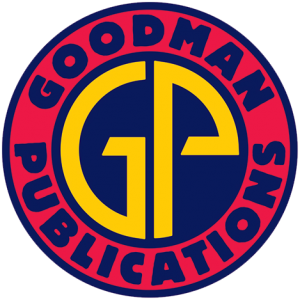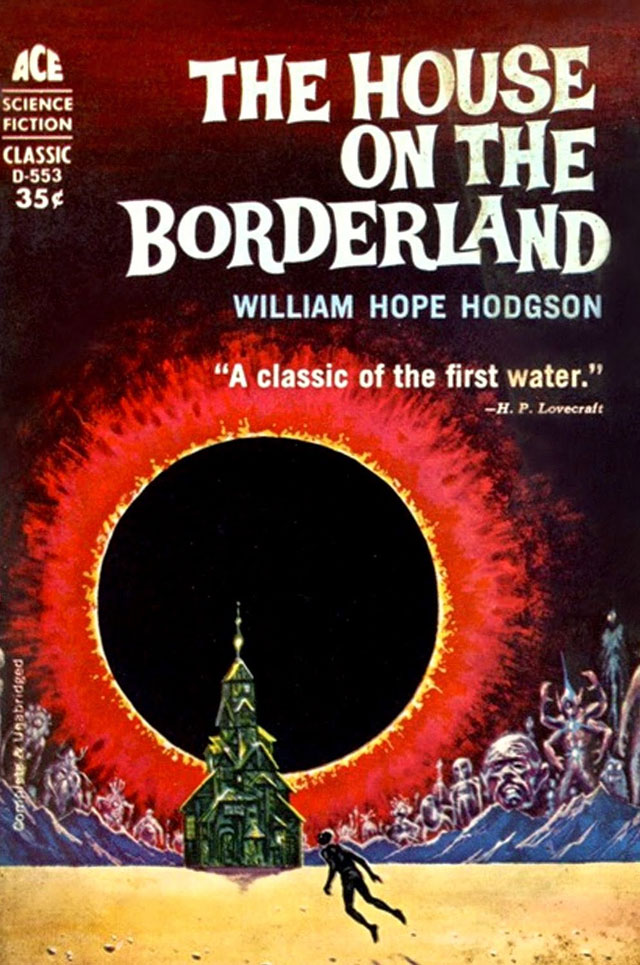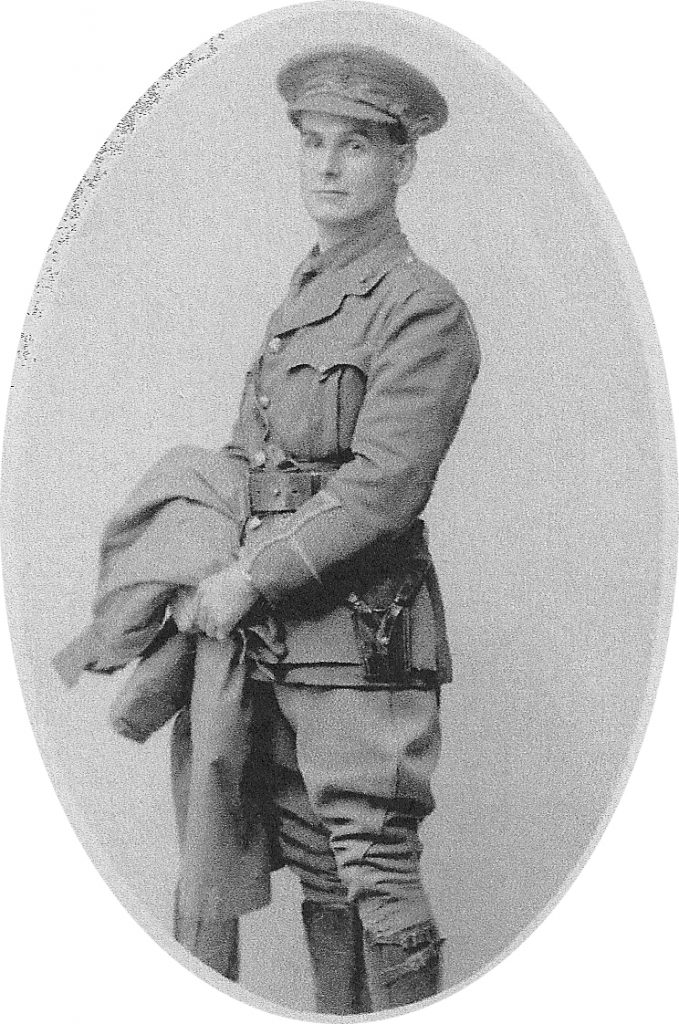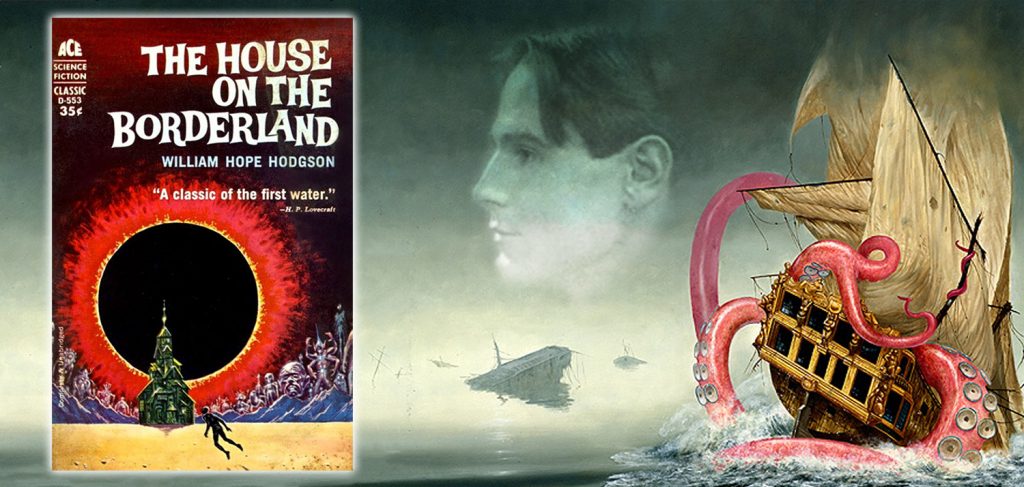
A Look at William Hope Hodgson
by Bill Ward
The English writer William Hope Hodgson (15 November 1877 – 19 April 1918) is an author whose influence on those that came after him greatly exceeds his current renown among readers. This despite being hailed as one of the originators of Cosmic Horror, the sub-genre of horror fiction most readily associated with H.P. Lovecraft, and The Dying Earth tradition of science fantasy as later typified by Jack Vance, as well as producing two acknowledged classics of Weird Fiction, The Night Land and The House on the Borderland.
Perhaps this is due in part to Hodgson’s frequent use of antiquarian or complex style. Unlike his almost exact contemporary, Jack London (1876-1916), the American author whose brisk, muscular prose ensured that generations of children and adults alike would read with pleasure works such as The Call of the Wild and The Sea-Wolf, Hodgson’s own language was much closer to the 19th century tradition of English letters. But this style also made it much more suited to Hodgson’s subject matter of supernatural horror, ghost stories, and wild visionary flights of dark imagination.
Comparison with London isn’t purely due to a coincidence of lifespan, but because the two writers had similar, eclectic backgrounds. Both fled home at an early age for life on the sea, and both had a roving, restless spirit that saw them experiment in various occupational ventures until finally settling on writing. Indeed, it was Hodgson’s early essays on bodybuilding and physical culture – he was, among other things, what might be termed today as a personal trainer – that lead him to fiction.
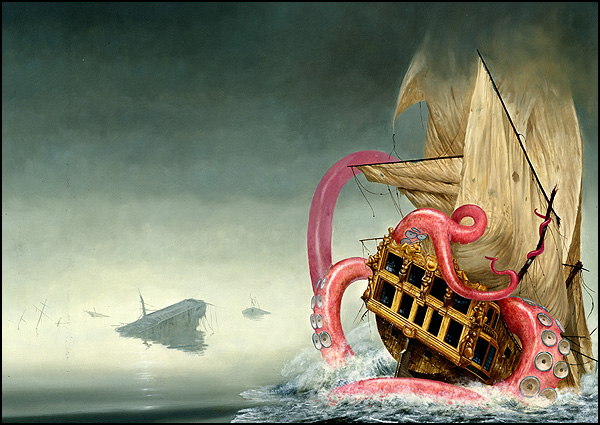
Much of Hodgson’s early stories drew on his experiences as a sailor, always a popular theme in the adventure magazines of the day. He wrote numerous short stories along these lines but, in his first published novel The Boats of the Glen Carrig, he arrived at a fantastic fusion of nautical adventure and otherworldly horror. Describing the increasingly fraught struggle for survival on an uncharted island by the remnant crew of a lost ship, Glen Carrig masterfully escalates the tension as mysteries and oddities abound in the form of mutated sea-life, ghost ships, and yet stranger things beside.
The same unfolding weirdness and uniquely imagined horror characterizes The House on the Borderland, perhaps Hodgson’s most famous book. Ostensibly operating within the classic premise of gothic fiction wherein a lone protagonist must weather the mysterious occurrences in a haunted setting, The House on the Borderland instead interjects bizarre visions and even more bizarre monsters in the form of the Swine-Things into a story that almost feels more like a post-modern mashup of genre tropes than a novel published in 1908. Hodgson’s often languid prose is outrun by his headlong pace in this story, and the final, climactic plunge into a terrifying vision of infinity ranks as one of the most quintessential scenes in all of Cosmic Horror.
Hodgson remained a productive writer of short fiction during this time, with his Carnaki stories of supernatural sleuthing being some of his most memorable and accessible works. Combining the ghostly element of gothic fiction, the Edwardian fascination with séance and spiritualism, and the rational detective tradition of Sherlock Holmes — along with a healthy sprinkling of early twentieth century technological invention – the Carnaki stories would prove a popular recipe for future imitators, right down to the Ghostbusters and paranormal investigators of the present day.
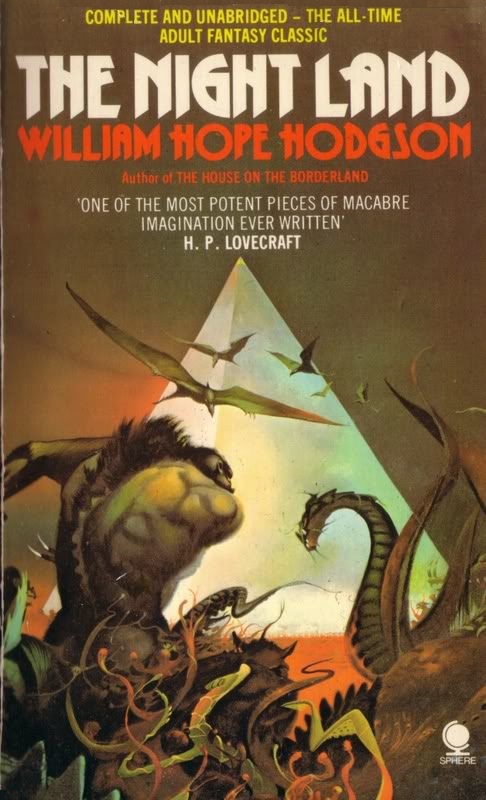
But it is The Night Land that ranks as Hodgson’s major work. His last published novel (though perhaps the first he wrote – there is a theory that Hodgson’s novels were published in the reverse order in which the were written) The Night Land describes a far future Earth in which the Sun has gone dark, and the remnants of humanity spend their final years besieged in the city of the Last Redoubt. The dark places of the world are the domain of monsters – whether alien, mutated human, or supernatural other is left to the reader to discover. The major inspiration for the Dying Earth sub-genre, The Night Land is a heady amalgam of turn of the century science fiction and supernatural horror, where the Earth Current powers force fields and spark guns, humanity has telepathic powers, and the permanent dark of the world harbors ghosts and monsters. Clark Ashton Smith summarized it best, The Night Land is “the ultimate saga of a perishing cosmos, the last epic of a world beleaguered by eternal night and by the unvisageable spawn of darkness. Only a great poet could have conceived and written this story…”
Tragically, the great poet would die young, another life cut short by The Great War, with his full promise as a writer of unique imaginative fiction never truly fulfilled. But he gave generations of writers astoundingly original models of imaginative literature for inspiration and, to those readers lucky enough to encounter his sadly neglected work, wildly creative marvels of fervent imagination and dark wonder. With all of William Hope Hodgson’s major works now in the public domain, we his fans can hope that new generations will now discover a writer whose work, whose life, and whose very era was itself one of discovery and unlimited speculation.
